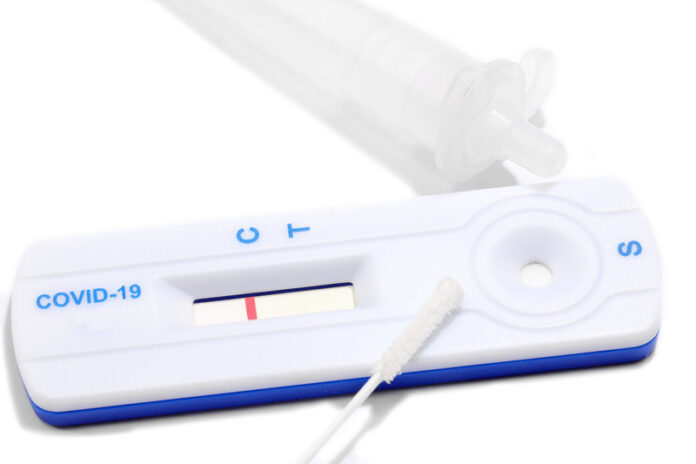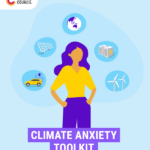It was day four of our two-week vacation to Aruba in December of 2023. I had been sick all night, running to the bathroom every half hour. I wondered, could this be COVID? On the airplane from Toronto, we had booked premium seats with only two to a row. We wore masks except when the inflight meal was served. Our flight attendants were unmasked. The people in the row in front of us were unmasked. One of them coughed throughout the flight. On cue, I fell ill the evening of the third day.
We had brought COVID-19 antigen test kits with us as a precaution. After a sleepless night, I used the swab test and in seconds the results returned positive. My wife was still feeling okay and as a precaution, she took the antigen test with a negative result. That afternoon she started feeling ill. The next morning she tested herself again and she was positive. The rapid antigen test we were told could produce a false negative, but not a false positive.
We informed the hotel immediately and they asked us to stay quarantined in our room for five days. We were referred to a local doctor and a subsequent video call was arranged.
Paxlovid, a drug that shortens the duration and lessens the symptoms of the virus, would have been prescribed for my wife but not me because of my heart condition. Paxlovid, however, was not approved for use in Aruba. The doctor over a videolink took our history and advised us to stay in our room, hydrate and rest. Even if we were still showing symptoms or testing positive, she advised us to get on the airplane and go home upon our scheduled departure date.
Our vacation was ruined. The virus weakened us and when we finally were allowed outside on our Aruba getaway we found ourselves exhausted and barely hungry. We had planned to celebrate our 50th wedding anniversary at the hotel’s fanciest restaurant but barely touched what was served or the cake they baked and brought to our table.
Because of the DIY antigen test, did I need to speak to the doctor to find out if I had COVID? No! The test did that. That’s partly what inspired me to write about the growing market for do-it-yourself (DIY) testing in medicine. That and an article that appeared recently in the Washington Post describing the rise of the DIY medical industry. It described DIY as a “parallel medical ecosystem” that was generating US $5 billion in income for the many companies jumping into the market with revenue expected to grow to over $10 billion by 2032.
DIY home testing has shifted medical diagnosis from doctors’ offices and medical laboratories to living rooms. To some degree, this was bound to happen. After all, diabetics self-administer glucose monitoring and give themselves insulin injections. Pregnancy screening tests are available at local drugstores or can be ordered online. More recently genetic testing using 23andMe, AncestryDNA and other products have given consumers the ability to look at their DNA. In 2017, home screening tests became available to determine if a woman had genetic anomalies that made them more susceptible to breast cancer.
I succumbed to the DIY world when I purchased a Kardiamobile in 2020 after COVID-19 left me with atrial fibrillation and tachycardia. It cost me CDN $89 and I ordered it on Amazon. Today I can monitor my heart rhythm and produce 30-second electrocardiograms whenever I feel any changes. I send these printouts to my family doctor and cardiologist.
If you are looking for a home test you can find one online that screens for:
- allergy triggers and food sensitivities
- sexually transmitted diseases (STDs) from chlamydia, gonorrhea, hepatitis-C (HCV), human immunodeficiency virus (HIV), and syphilis, to trichomoniasis
- hypo or hyperthyroidism
- digestive and gastrointestinal function
- celiac disease
- colon cancer
- Lyme disease
- high bad and good cholesterol
- fertility and perimenopause issues
- vitamin D deficiency
- heart health
DIY testing is increasingly seen by consumers as convenient, private, affordable and quick. The problem and the dangers, however, are:
- DIY testing is a Wild West for companies that could be selling snake oil to unsuspecting consumers.
- A lack of regulatory oversight by government health bodies and by the medical profession makes reliance on many DIY tests suspect.
- Self-diagnosing medical conditions come with another problem when patients feel empowered and on equal footing with their doctors related to what ails them.
- Without a regulator and review process, there are no guarantees that DIY tests are legitimate or accurate in their diagnosis. Those taking a DIY test may be doing it wrong or maybe misreading the results. Relying on a negative test result, therefore, as proof a person is not sick could be life-threatening.
The medical profession, medical insurers and governments have been slow to adapt to the growing DIY world. Current medical practice and laboratory testing have also contributed to the rise of DIY medicine. When a patient wants to know what’s wrong and the profession is slow off the mark, they find answers on their own and with the Internet and search engines, DIY tests are where more are going to get them.








